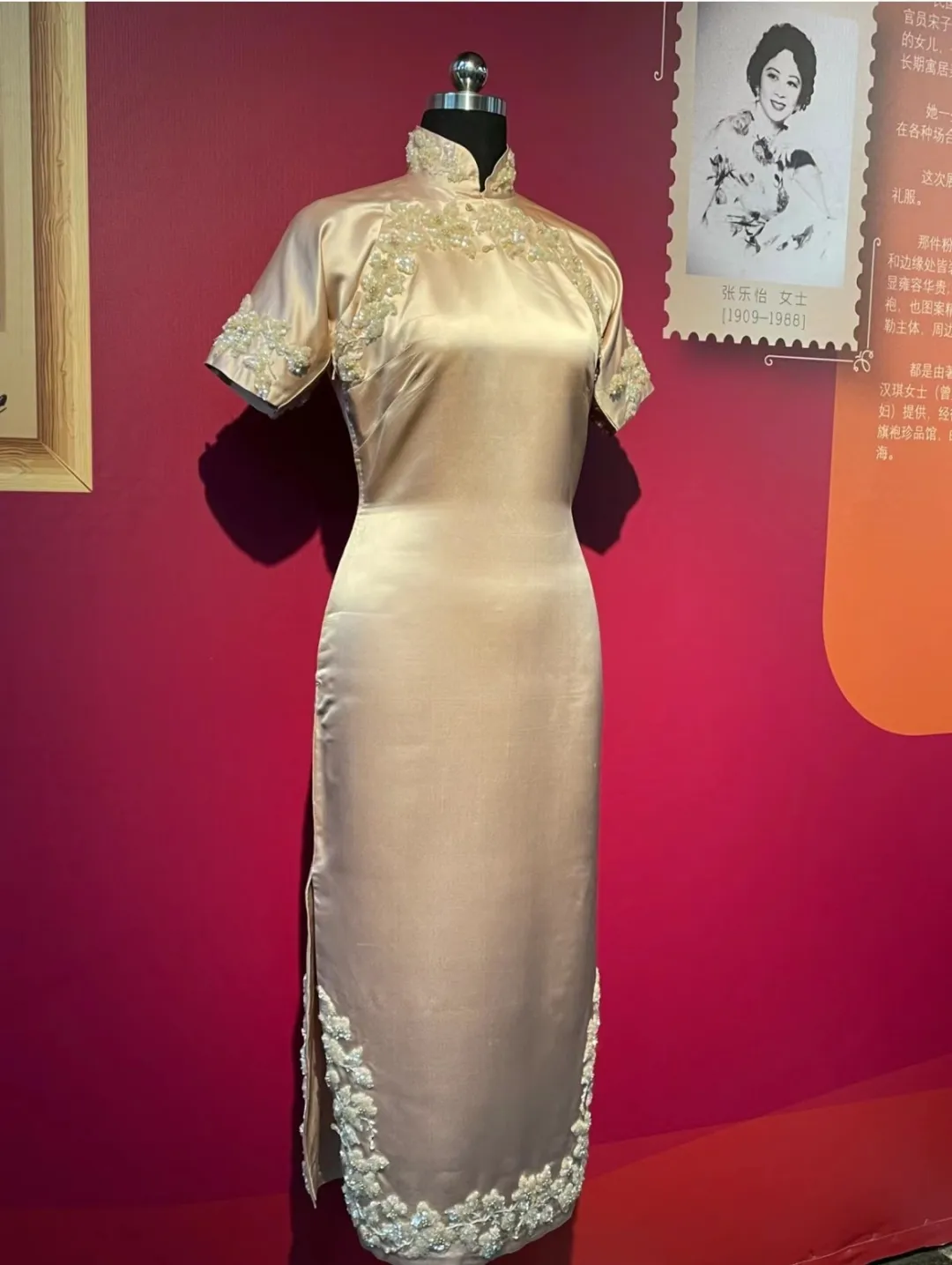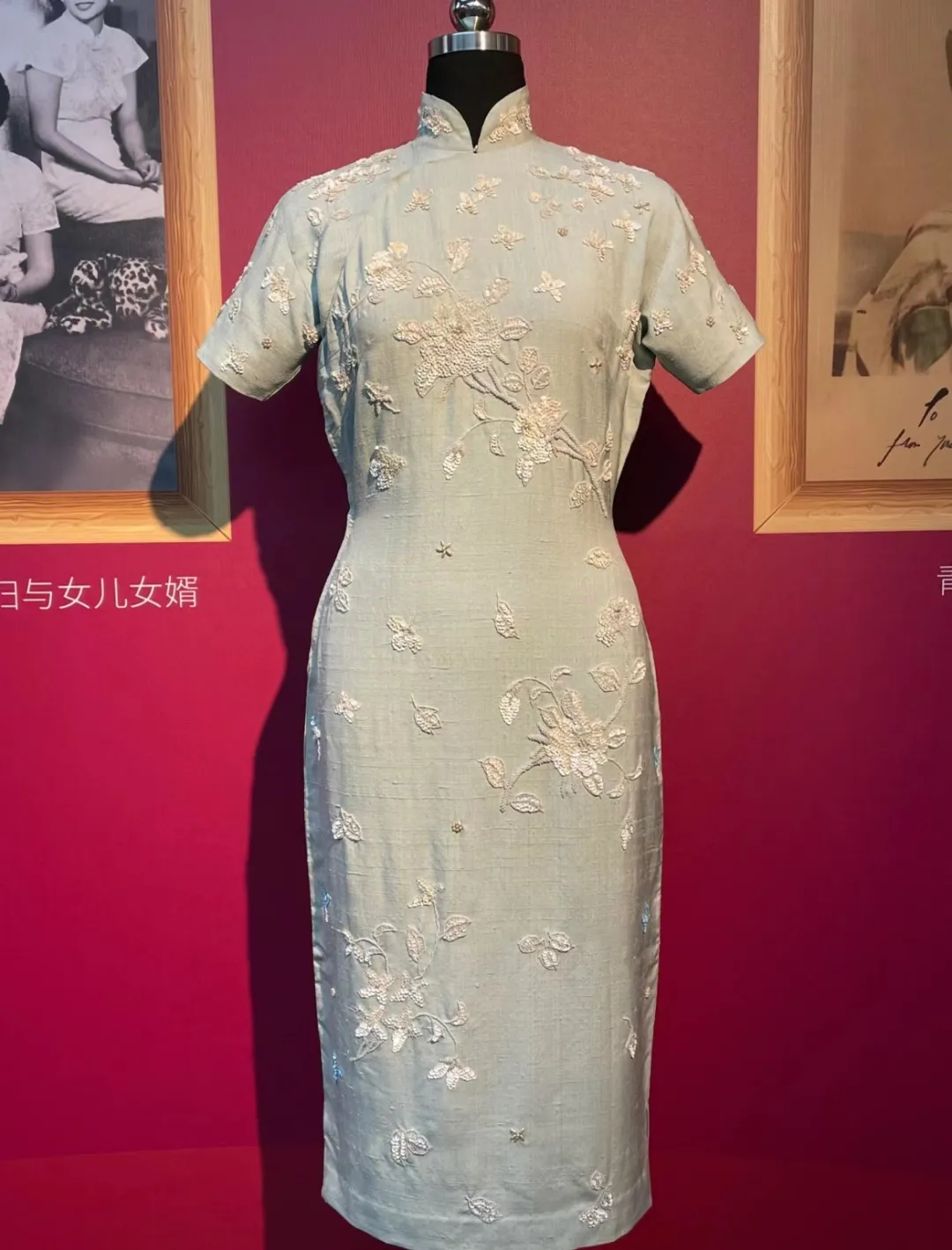Recently, I've been reading A Treasury of Cheongsams Worn by Chinese Aristocratic Families written by Song Luxia and Xu Jingcan. This book is set against the backdrop of those Chinese aristocratic families that once shone brightly and endured on the historical and political stage. The cheongsam, as the central element throughout this backdrop, is like a cultural micro - cosmet of China's upper class. Through its owners, it reveals the clothing culture, aesthetic trends, humanistic features, and craftsmanship of the last century.
The book showcases 90 old cheongsams worn by famous ladies from Chinese aristocratic families. As the authors said, "They are a rare, non - renewable, and endangered collection of specimens of Shanghai - style old cheongsams." These cheongsams represent the highest level of Shanghai - style cheongsams in the last century. The two authors and many colleagues spent a great deal of effort collecting and displaying these cheongsams. It's not just about reviewing and presenting the appearance of national clothing culture but also a challenging task of racing against history and time to rescue more buried, forgotten, and neglected clothing cultural treasures.
So, today, let's follow the context and characters in the book to explore the beauty of cheongsams from that era.
Zhang Leyi
Zhang Leyi (1907 - 1988), a native of Lushan, Jiujiang, Jiangxi, was the daughter of Zhang Mouzhi, a well - known businessman in Jiujiang, Jiangxi. She graduated from Jinling Women's University in Nanjing and later returned to Lushan to participate in the management of the Zhang family's business. The Zhang family was a prominent one in Jiangxi. Her father, Zhang Mouzhi, started as a comprador. He was good at seizing opportunities and became a real - estate tycoon by running a civilian car company and founding an architectural design and construction factory.
In 1928, Zhang Leyi married Song Ziwen, the then Minister of Finance of the National Government. Song was a famous financier and diplomat in the Republic of China, holding a master's degree in economics from Harvard and a doctorate from Columbia University. The Song family was one of the four major families in the Republic of China, being the absolute center of politics, economy, and power in the last century. Zhang Leyi was a typical example of a famous lady in that era, with a successful career, a happy love life, and a long - lasting marriage. She was beautiful, well - educated, and married for love.
After marrying Song Ziwen, Zhang Leyi often attended political activities publicly, helped Song Ziwen handle family business affairs, and actively participated in women's and Christian causes. Before the liberation, she left Guangzhou for Hong Kong with her husband and later settled in Manhattan, New York.
In different event photos, we can see that Miss Zhang Leyi loved wearing cheongsams. Each cheongsam she wore fit her perfectly. Take this white lace see - through narrow - hem cheongsam dress for example. It's elegant and quiet. White itself has an air of elegance associated with wealth and leisure. Lace, a product of the 16th - century French court aristocracy, is famous for its delicate open - work patterns and high - quality handicrafts. The classic stand - collar and half - sleeve design with just a bead button on the binding enhances the see - through beauty of the lace, creating a sexy and elegant look. A pearl necklace is added as a highlight, making different shades of white complement each other.
In the book, there is also a similar lace cheongsam dress in lilac pink. The lace is decorated with exquisite diamond - setting designs. The combination of lace and diamonds is not tacky but shows a sense of luxury and femininity.
Besides the lace ones, there are also some cheongsams made of see - through gauze combined with lining skirts. Even from today's aesthetic perspective, they are still modern, well - shaped, and interesting. The overall design, from the lining to the floral patterns, accessories, colors, and the outer see - through fabric, is very harmonious. The printing part is also remarkable, with silver - threaded floral patterns and faint colors, simple yet unforgettable.
When attending important occasions or dinners, Zhang Leyi also chose cheongsam dresses made of soft satin. For example, this cheongsam from an early Shanghai - style cheongsam show is similar to those in her photos, with a smooth and soft texture, stand - collar and half - sleeve style. The cuffs, collar, and front opening are decorated with bead embroidery, and the upper and lower cross - collars and the hem echo each other, adding a touch of nobility. In the book, there is a similar cheongsam decorated with hand - made three - dimensional rose ribbon embroidery, which shows the finesse of handicrafts.
The lake - green cotton - linen beaded cheongsam dress is also worthy of appreciation. The color is light and refreshing, and the texture with some hemp seeds and knots gives it a sense of simplicity and elegance over time. There are also two rare dark - colored cheongsam dresses in Zhang Leyi's old photos, a black velvet one representing elegance and a simple and smooth dark - blue one, a classic interpretation. The matching details are also very particular, such as velvet with pearls and sequins with statement jewelry, which well show the status and taste of a diplomat's wife.
All these come from the old days that we've never witnessed but always cherish. That era not only gave birth to many talented people but also contributed to today's proud Chinese aesthetics. Looking forward to sharing more cheongsam stories with you next time.




